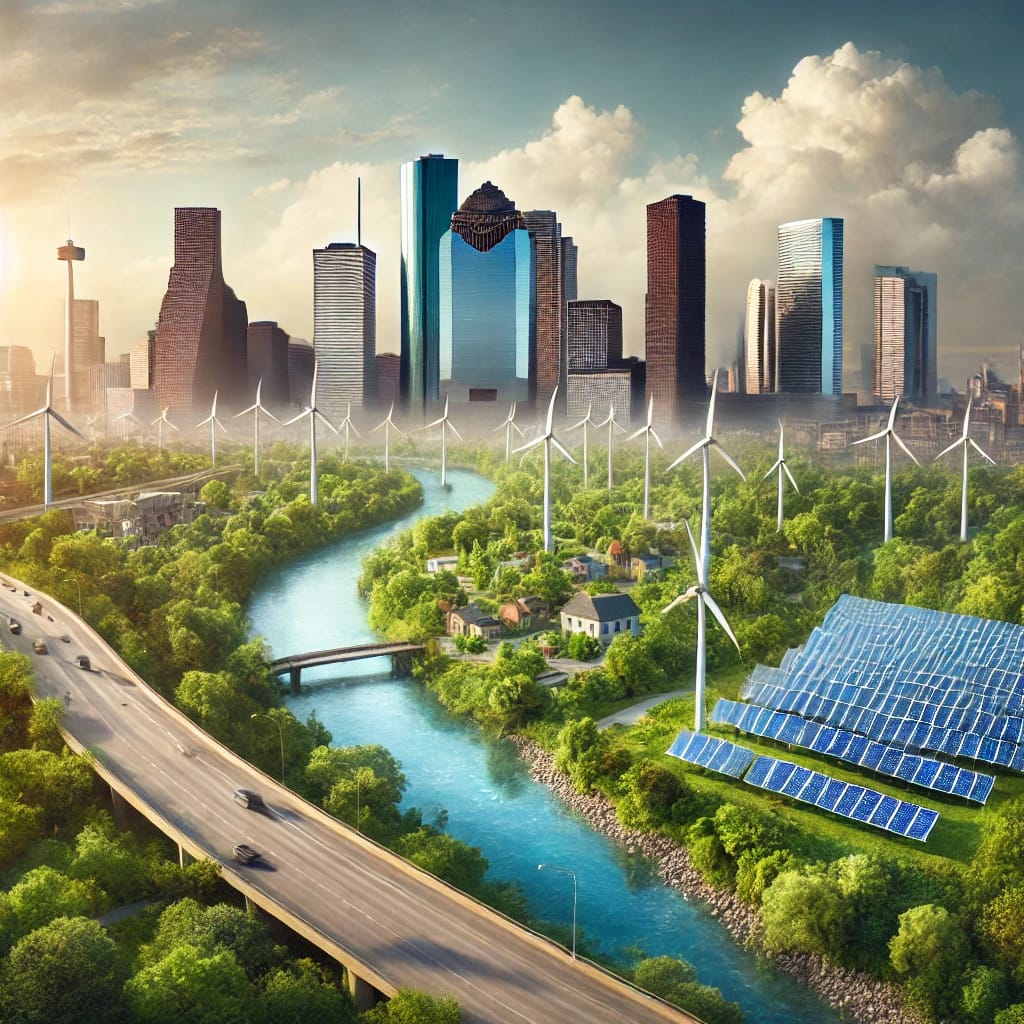
Setting the Stage: Houston’s Environmental Challenges
As the energy capital of the world, Houston has faced significant environmental challenges, including air pollution, carbon emissions, and the threat of extreme weather events like hurricanes and flooding. The city’s location near the Gulf of Mexico makes it particularly vulnerable to the impacts of climate change, emphasizing the need for effective and sustainable environmental strategies.
Houston’s Climate Action Plan
In 2020, Houston launched its Climate Action Plan with the goal of becoming carbon neutral by 2050. This ambitious plan outlines four main areas of focus:
- Transportation: Transitioning to electric vehicles and enhancing public transit options.
- Energy Innovation: Partnering with energy companies to reduce emissions and promote renewable energy.
- Building Efficiency: Implementing standards to ensure that new and existing buildings use energy efficiently.
- Resilience Against Climate Risks: Investing in infrastructure projects that can withstand extreme weather conditions.
Progress and Initiatives
To support these goals, Houston has begun working with private companies and non-profit organizations to foster innovation in renewable energy. The city’s robust involvement in the solar and wind sectors reflects its evolving approach to diversifying its energy portfolio.
Infrastructure Projects for Resilience
Buffalo Bayou Project
The Buffalo Bayou Project exemplifies Houston’s efforts to integrate natural solutions into its flood management strategy. This project includes improving green spaces along the bayou to absorb excess rainwater, thereby reducing the risk of flooding during heavy rainfall. The development of parks and walking trails not only enhances community spaces but also serves as a buffer against future environmental threats.
Coastal Barrier Projects
Houston’s proximity to the coast has necessitated large-scale protective measures such as the “Ike Dike”, a proposed barrier system designed to protect the city from storm surges. This ambitious project, named after Hurricane Ike that hit in 2008, highlights Houston’s focus on proactive defense against natural disasters exacerbated by climate change.
Collaborative Efforts with the Energy Sector
Despite being the center of the oil and gas industry, Houston is partnering with major energy corporations to pioneer sustainable practices. Companies are increasingly investing in carbon capture technology, which aims to reduce the amount of CO2 released into the atmosphere. Collaborative efforts have also led to the establishment of research centers focused on exploring new energy sources and technologies.
The Role of Community and Grassroots Movements
Local communities and grassroots organizations have been instrumental in pushing for more stringent environmental regulations and promoting sustainability. Initiatives led by these groups have raised awareness about issues like air quality and green space access, leading to city policies that prioritize public health and safety.
Education and Public Involvement
Educational programs aimed at promoting environmental stewardship have been introduced in schools and community centers. Workshops and city events encourage residents to participate in sustainability efforts, such as tree planting and recycling drives.
The Path Forward: Sustainability and Innovation
Houston’s journey toward addressing climate change and environmental issues reflects a balance between leveraging its strengths in energy production and pioneering a more sustainable future. Ongoing investments in smart grid technology, public transit expansion, and clean energy showcase the city’s determination to lead by example. The focus remains on innovation that supports both economic growth and environmental responsibility.